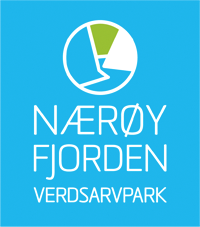Press release from the World Heritage Council:
The management of the world heritage fjords must be strengthened
During the Grøn Fjord Conference in Geiranger last week, we were both presented and demonstrated the latest in green, emission-free technology linked to traffic in the world heritage fjords. Norwegian maritime shipping is leading the way and showing the way for how the world heritage fjords can be emission-free areas and set the example for other marine world heritage areas around the world.
Now is the time for the management of the world heritage fjords to know their visiting hours. In Stortingsmelding 35 (2012-13) and 19 (2016-17) it is stated that "Norwegian World Heritage Area shall be developed as a beacon for the best natural and cultural heritage management". We must develop the world heritage fjords into GREEN LIGHTHOUSES also in Norwegian management. We must turn around blue smoke, exhaust, traffic chaos and emigration - to green, clean and living fjord communities in growth. Stricter regulation that can promote low- and zero-emission-free traffic both on the fjord and on land must be in place, so that business players who have the courage to invest in such technology are not punished by other players sailing in and taking market positions with scrapped material at a lower price .
On 14 November 2017, Norway was elected as a member of UNESCO's prestigious World Heritage Committee. There is therefore an extra big responsibility for Norway to show the way in good management of its world heritage sites in the next 4 years. The state party Norway cannot sit on the World Heritage Committee and at the same time not be able to solve the challenges of pollution in the World Heritage fjords. We therefore welcome stricter regulation for shipping from the Norwegian Maritime Directorate and we simultaneously challenge a joint management of the West Norwegian fjord landscape to make bold moves that can support the vision of "trackless traffic" in the world heritage fjords in the years to come. Through good management, Norway can choose to use the world heritage fjords as green beacons for the rest of the world. We are convinced that this will have a positive effect on Norwegian maritime shipping, at the same time as it will create added value in local tourism, and more robust fjord communities for the future, and at the same time ensure lasting world heritage values for future generations.
Never before have we been able to gather so many relevant levels of management and important actors with decision-making power for the world heritage fjords under one roof, as during the Grøn Fjord Conference last week (the municipalities, the county councils, the county governor, local management of the conservation area, the Norwegian Maritime Directorate, the Norwegian Environment Agency, the Ministry of Climate and the Environment, the Norwegian Road Administration, National Tourist Road, Coastal Administration, Port Authority). It is now high time that ALL levels of administration do their part to achieve national objectives.
The leadership of the World Heritage Council will in the future take a number of new initiatives to follow up the Grøn Fjord Conference:
- Invite all cruise lines operating in the world heritage fjords to a dialogue meeting regarding pollution in
the world heritage fjords
- Invite all management levels in the West Norwegian fjord landscape to a joint meeting around ours
environmental challenges in the fjord and on land
- Collect and share experiences for good world heritage management through UNESCO's navy
world heritage programme
- "The most gratifying thing about the Grøn Fjord conference 2018 was registering everyone who is on the lookout
the environment in general and world heritage in particular. Again, it's stoverein and "in" to
talk about the environment. Quantum leaps have been made in the development of new environmentally friendly technology, and
here the private sector has blazed a trail. Public authorities must now follow up with rule changes
which makes it safe and profitable to invest in low- and zero-emission solutions both on land and at sea.
World heritage represents both a special value and a special responsibility for the state party, i.e. in
in this case Norway. He is not a Norwegian special property, but a common property for all people
the globe. Therefore, general national policy will not always permit the necessary measures that are required
for safeguarding and promoting the heritage. Judgment on topics where it is time-critical to develop "new policy", is
within the field of pollution and cultural landscape care. The World Heritage Council for Western Norway
fjord landscape, has defined these as special investment areas in the future", he confirms
head of the World Heritage Council, Arne Sandes.
- «Grøn Fjord konferansen 2018 viste tydleg at det er store moglegheiter for å foredla Noreg
som reiselivsnasjon. Dette kan gjerast gjennom å ta i bruk moderne, rein teknologi. Og, mest
gledeleg av alt, aktørar i reiselivsbransjen er klare. For Nærøyfjordområdet bør fyrste steg
vera å tilby sporlaus ferdsel gjennom verdsarven. Med tog kjem du til og frå Flåm, med ny
heilelektrisk båt kjem du til og frå Gudvangen, så då er det bussen frå Gudvangen til Voss
som står att. Med den på plass, kan du reisa sporlaust i Vestnorsk fjordlandskap, både frå
Oslo og Bergen. Mil etter mil med sporlaus ferdsel – det fortener både verdsarven og
klimaet», avsluttar Hans Erik Ringkjøb, nestleiar av Verdsarvrådet for Vestnorsk
fjordlandskap.
Contact info:
Arne Sandnes, head of the World Heritage Council for the West Norwegian Fjord Landscape, arne.sandnes@norddal.kommune.no
Tel: 976 69 990.
Hans Erik Ringkjøb, deputy head of the World Heritage Council for the West Norwegian Fjord Landscape,
Hans.Erik.Ringkjob@voss.kommune.no Tel: 971 38 720.

